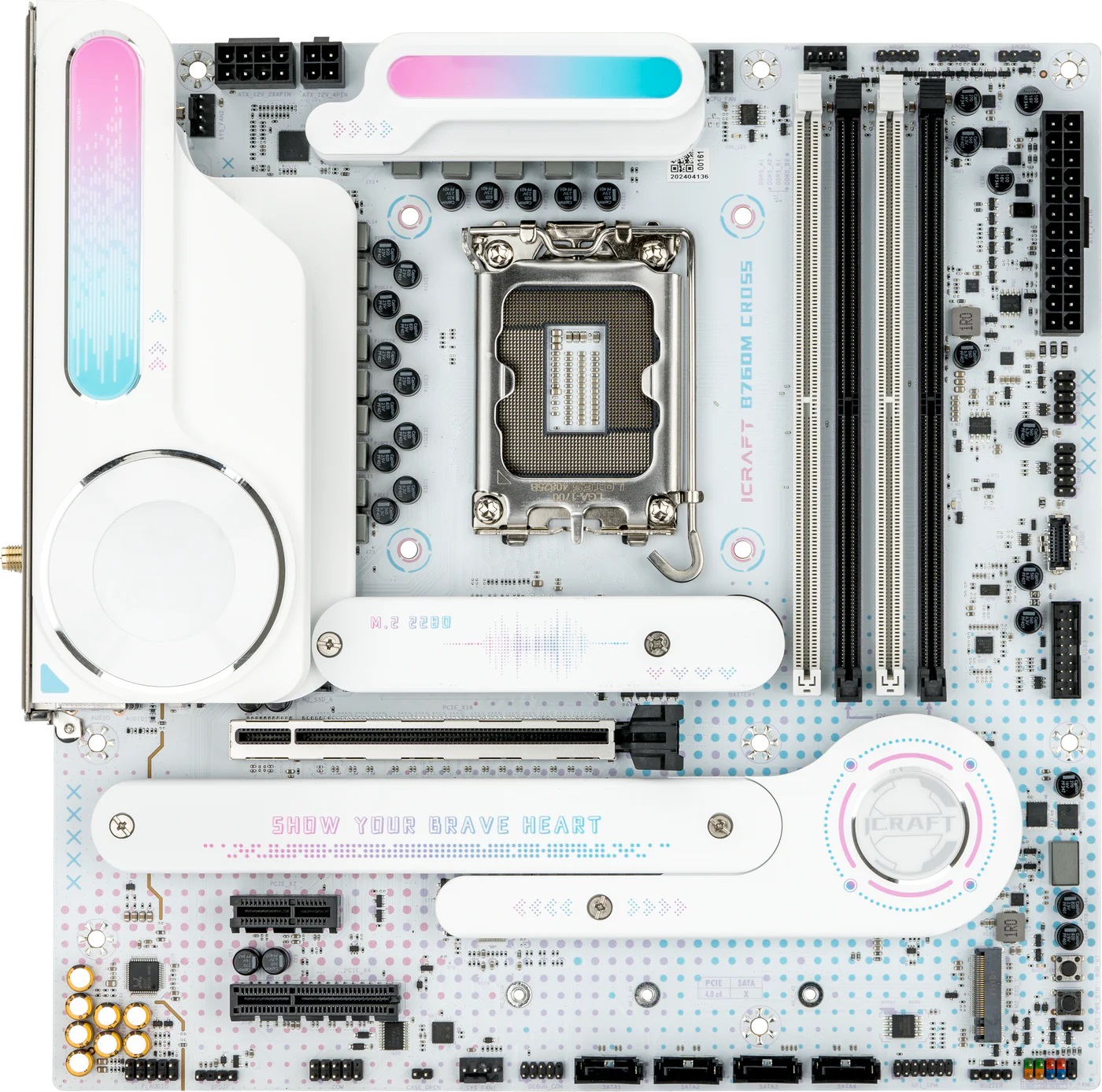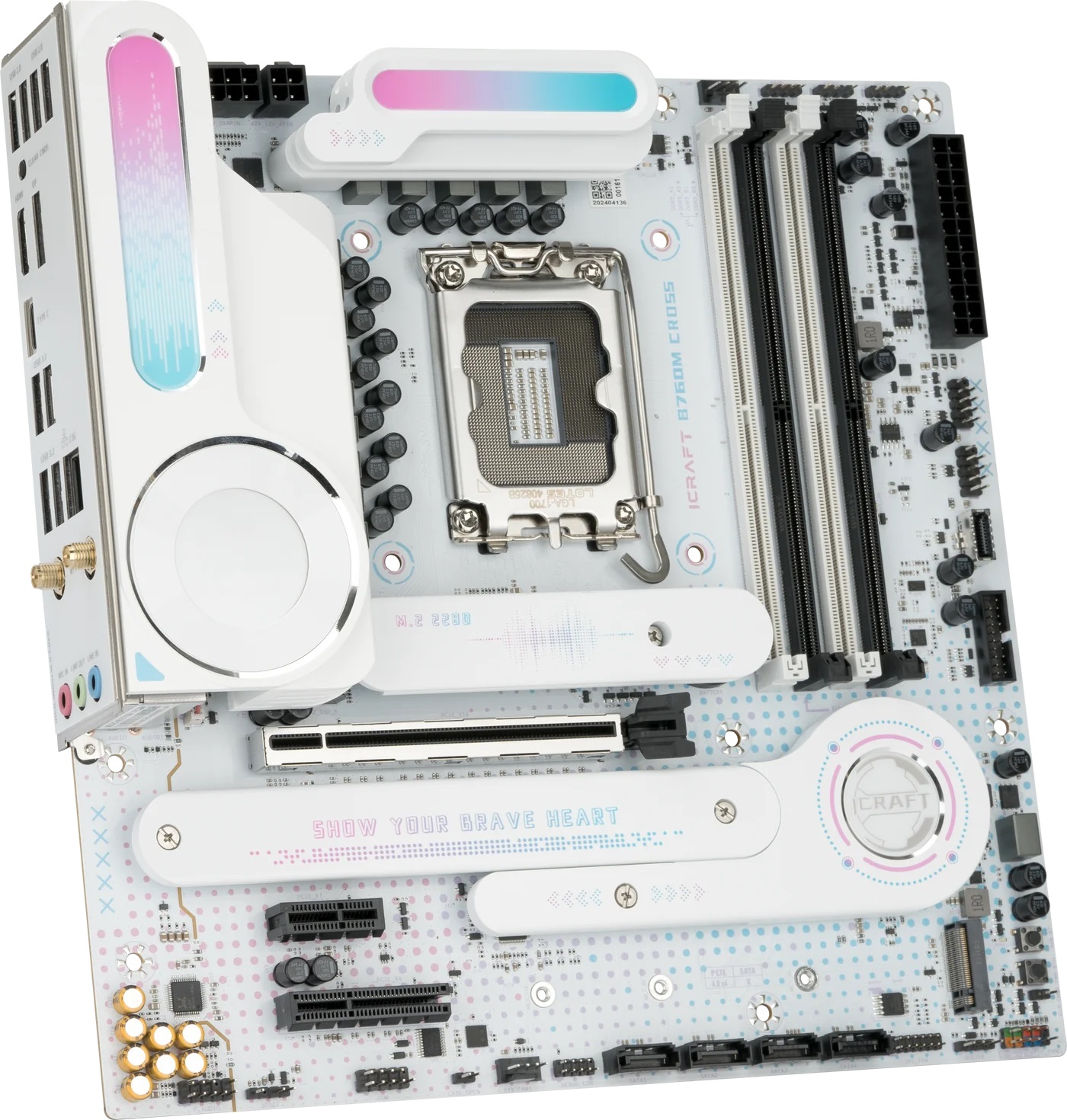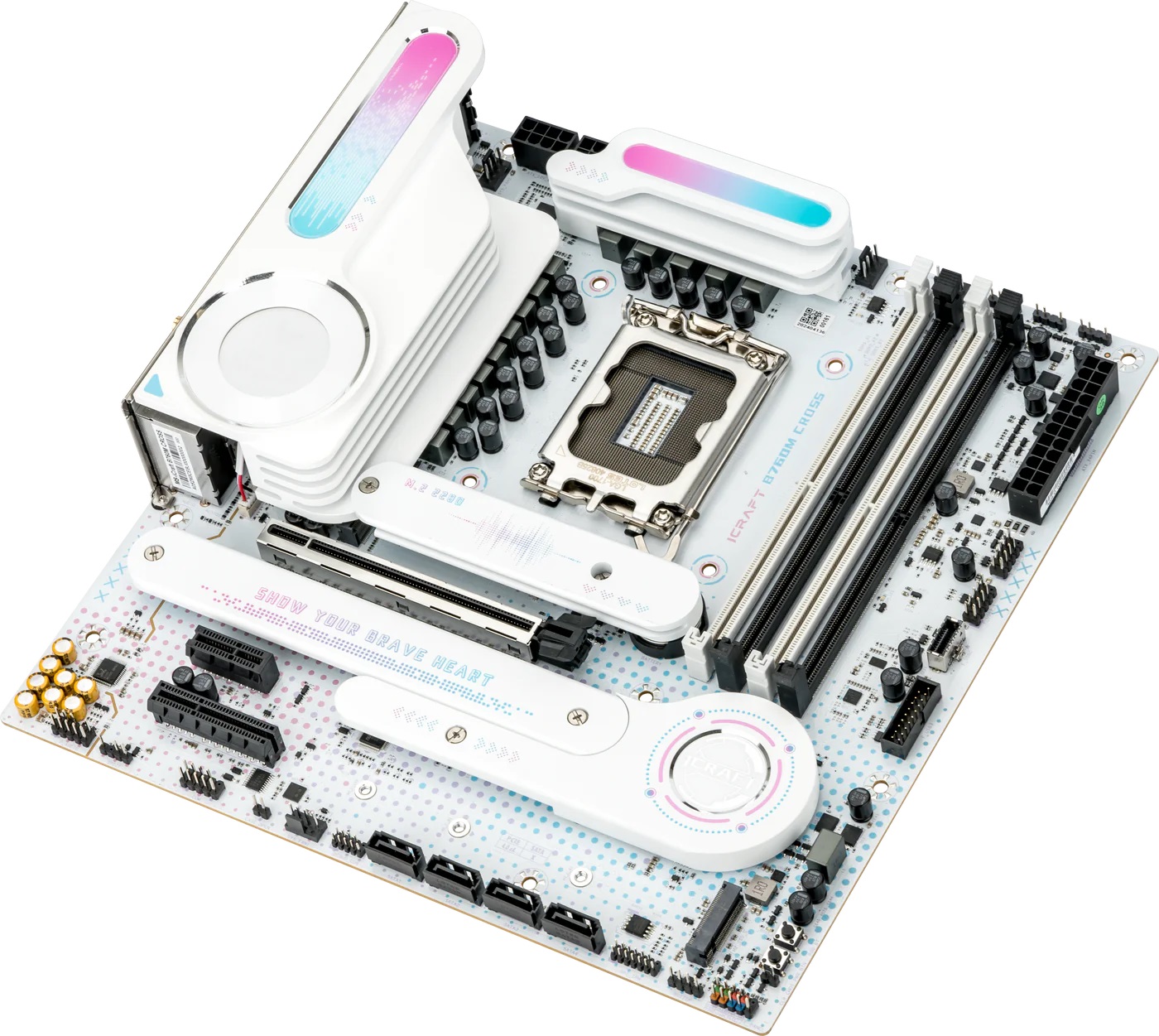We’ve had a chance to look at a few Micro ATX boards recently, but they were some of the least expensive we could find. We wanted to see how they performed and what features they had at an entry-level price point. We found many of these budget boards could do the job, but they are limited due to BIOS settings and paltry power delivery.
Today, we have Maxsun’s iCraft B760M Cross ($196) on our test bench, which is more expensive and offers a few more features than those less-expensive options. You get support for 12th-14th generation Intel processors, three M.2 sockets (two of which have heatsinks), two 20 Gbps USB Type-C ports, integrated Wi-Fi 6E, and a unique, though polarizing, white anime-themed appearance with some blue to purple accents. The board has a lot going for it but, like everything, isn’t perfect.
On paper, you should get everything out of high-end processors, as the website states the limit is 253W. However, during our testing, we found the system to peak around 225W, which left some performance on the table, especially when using heavily multi-threaded and longer-running loads. To that end, it did well in games and other lighter activities. When left at default, the performance difference isn’t much, but it isn’t reaching the advertised wattage either.
Below, we’ll examine the details and compare its performance against other Micro ATX and full-size (ATX) motherboards. This board will not make the best motherboard list, but it could still be appealing for those looking for a themed build – provided you’re willing to deal with its quirks. Before we get into those details, here are the specifications from Maxsun’s website.
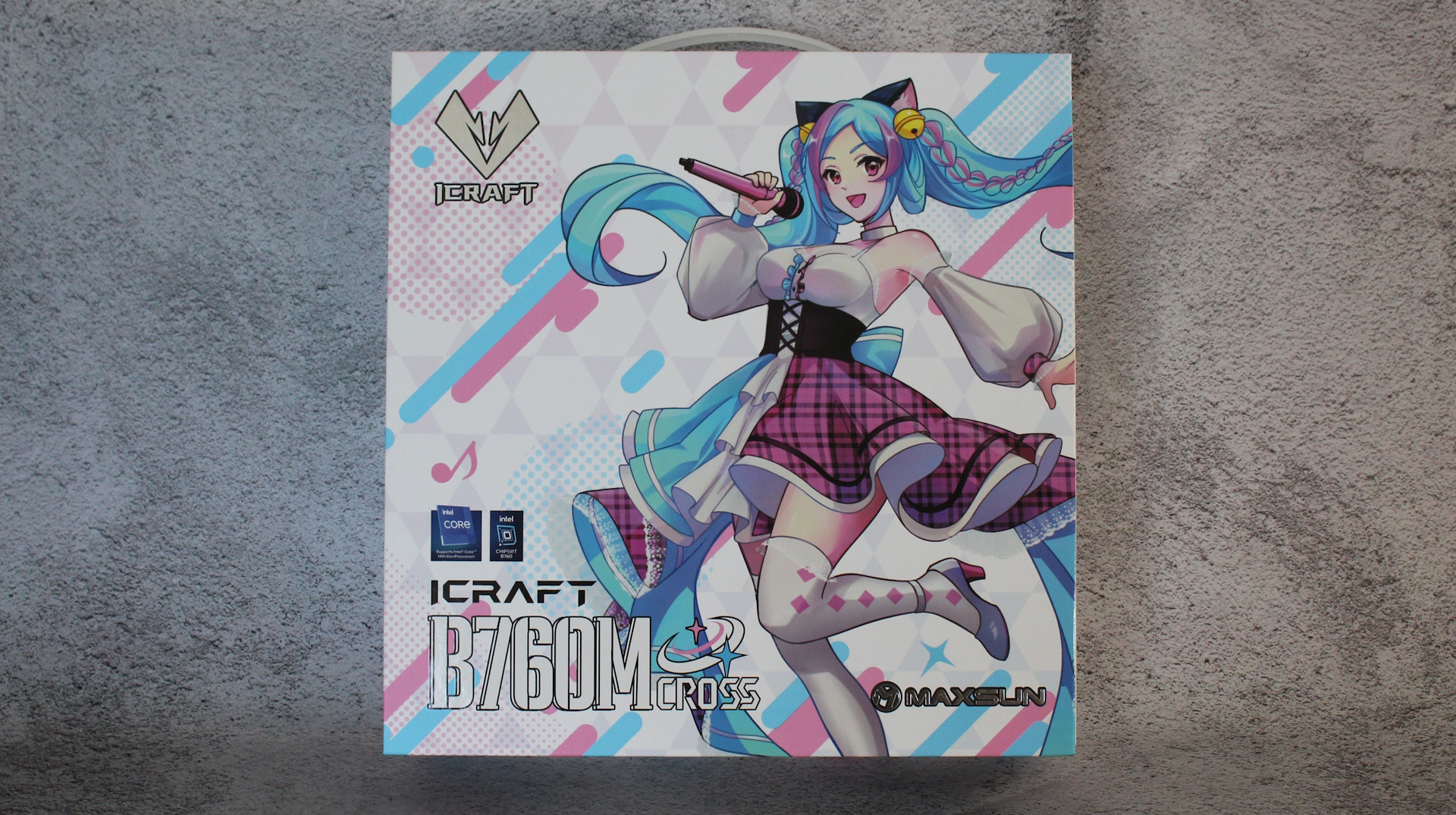
Specifications: Maxsun iCraft B760M Cross
| Socket | LG A1700 |
| Chipset | B760 |
| Form Factor | Micro-ATX |
| Voltage Regulator | 14 Phase (12x 50A MOSFETs for Vcore) |
| Video Ports | (1) DisplayPort (v1.4) |
| Row 5 – Cell 0 | (1) HDMI (v2.0) |
| USB Ports | (1) USB 3.2 Gen 2×2 Type-C (20 Gbps) |
| Row 7 – Cell 0 | (4) USB 3.2 Gen 1 (5 Gbps) |
| Row 8 – Cell 0 | (4) USB 2.0 (480 Mbps) |
| Network Jacks | (1) 2.5 GbE |
| Audio Jacks | (3) Analog |
| Legacy Ports/Jacks | ✗ |
| Other Ports/Jack | ✗ |
| PCIe x16 | (1) v5.0 x16 |
| PCIe x8 | ✗ |
| PCIe x4 | (1) v3.0 x4 |
| PCIe x1 | (1) v3.0 x1 |
| CrossFire/SLI | ✗ |
| DIMM Slots | (4) DDR5 7200+(OC), 192GB Capacity |
| M.2 Sockets | (1) PCIe 4.0 x4 (64 Gbps) / PCIe (up to 80mm) |
| Row 20 – Cell 0 | (2) PCIe 4.0 x4 (64 Gbps) / PCIe (up to 110mm) |
| SATA Ports | (4) SATA3 6 Gbps |
| Row 22 – Cell 0 | Supports RAID 0/1/5/10 |
| USB Headers | (1) USB v3.2 Gen 1, Type-C (10 Gbps) |
| Row 24 – Cell 0 | (1) USB v3.2 Gen 1 (5 Gbps) |
| Row 25 – Cell 0 | (2) USB v2.0 (480 Mbps) |
| Fan/Pump Headers | (4) 4-Pin |
| RGB Headers | (2) aRGB (3-pin) |
| Row 28 – Cell 0 | (1) RGB (4-pin) |
| Diagnostics Panel | ✗ |
| Internal Button/Switch | ✗ |
| SATA Controllers | ✗ |
| Ethernet Controller(s) | (1) Realtek RTL8125BG (2.5 GbE) |
| Wi-Fi / Bluetooth | Wi-Fi 6E AX211 (160 MHz, BT 5.3) |
| USB Controllers | Genesys GL3590 |
| HD Audio Codec | Realtek ALC897 |
| DDL/DTS | ✗ / |
| Warranty | 3 Years |
Inside the Box of the Maxsun iCraft B760M Cross
Inside the box, Maxsun includes some accessories to help get your PC up and running without making an extra trip to the store. You get two SATA cables, the Wi-Fi antenna, a couple of screws and mounts for M.2 drives, and a tiny toolkit. Also included are some stickers with the anime character (Aijia) and a plastic standup toy. You’ll need to download the drivers for the board from the Maxsun website.
It’s worth noting that Maxsun doesn’t seem to include a manual in any of their boards. There isn’t a paper one (not surprised; most board partners ditched physical manuals years ago), nor can you find one on the board’s webpage. So, if you’re new to building PCs and rely on a manual to help or are just curious about what things are and where they go, you’re out of luck.
Design of the B760M Cross
The B760M Cross, as the “M” implies, is a white Micro ATX form factor board that measures 245 x 245mm. Its white theme is accompanied by blue-to-purple accents (maxsun calls it a gradient coating) on the VRM heatsinks, making it stand out. There’s also a circular black-and-white screen with RGB lighting on the left VRM heatsink that shows off the Anime character and glows with whatever LED color you choose. The heatsinks on the VRMs have plenty of mass and surface area and do an excellent job keeping the power delivery bits below running well within specifications.
There are two RBG lighting areas. The first is the small screen on the VRM heatsink, and there’s another area on the bottom left by the audio and PCIe slots. Overall, I like the look of this board. While the light blue to pink accents may not be for everyone, it’s still a good-looking motherboard that fits in well with a wide variety of build themes.
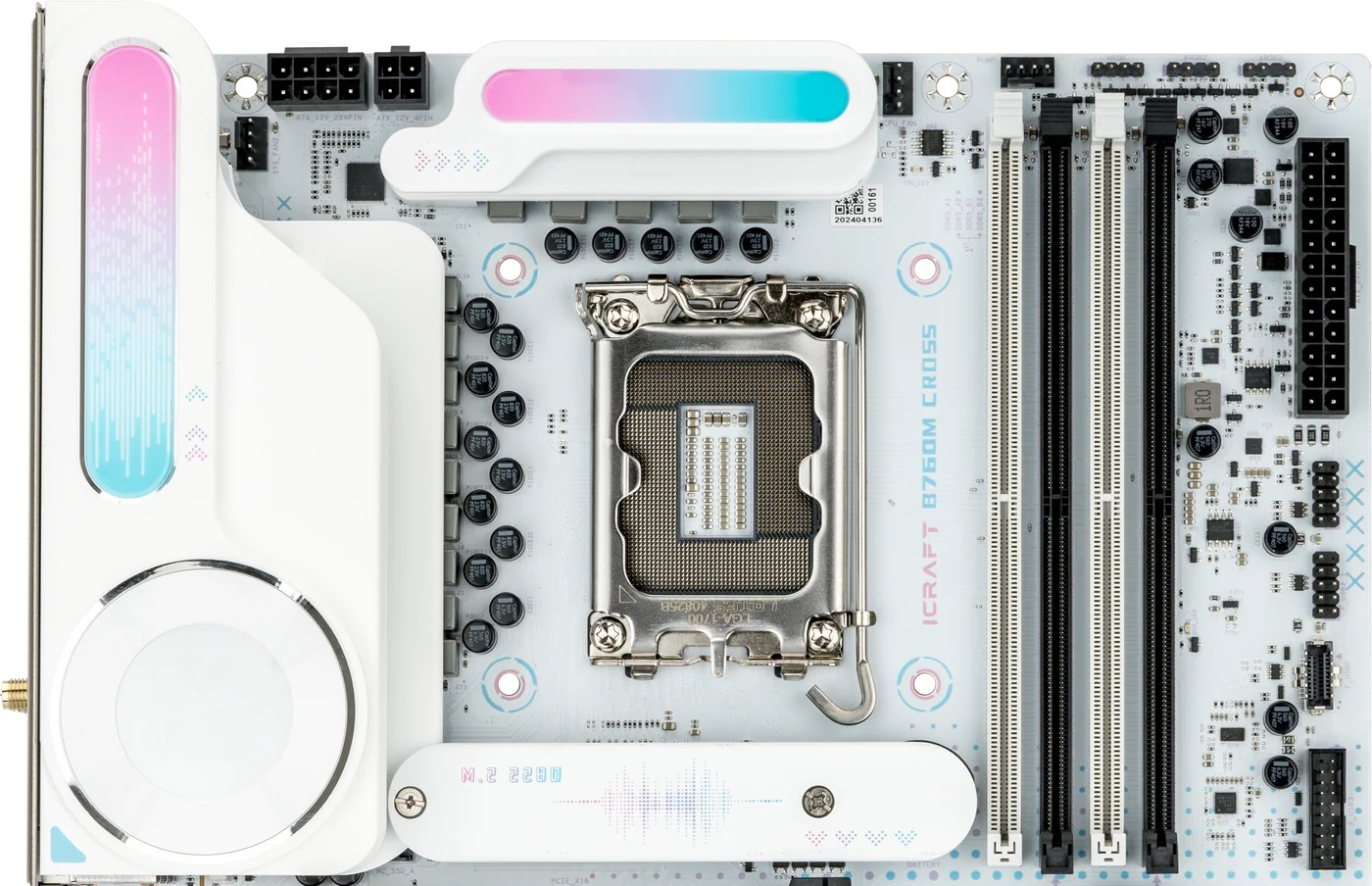
We’ll start our board tour in the upper-left corner. Here, we spy the usual EPS power connectors – in this case, an 8-pin (required) and 4-pin (optional) to power the processor. Below that is our first of four 4-pin fan headers. Each header supports PWM and DC-controlled devices. Maxsun doesn’t list output (something you usually see in manuals…), so we must assume they are all 12W/1A, as overloading any of them could cause catastrophic failure. Managing fan speeds needs to be done through the BIOS since Maxsun doesn’t offer Windows-based software.
To the right of the top VRM heatsink are two more fan headers and the four RAM slots. Maxsun lists support for up to DDR5-7200 on the specifications page (yet on the overview page, DDR5-7600) and a capacity of up to 192 GB on the unreinforced slots. We had no issues running our DDR5-7200 kit, but we didn’t push it past that.
Above the DRAM slots are all three RGB headers. The B760M Cross offers two 3-pin ARGB headers and one 4-pin RGB for additional glow. The Maxsunsync application controls the lighting, both integrated and anything else you attach to the headers.
Shifting focus down the right edge, we run into the 24-pin EPS connector to power the board and all USB headers. There are two USB 2.0 headers, a USB 3.2 Gen 2×2 (20 Gbps) Type-C header, and a 19-pin USB 3.2 Gen 1 (5 Gbps) header. Users shouldn’t have any problem finding a port for their peripherals between the nine on the rear and these additional headers.
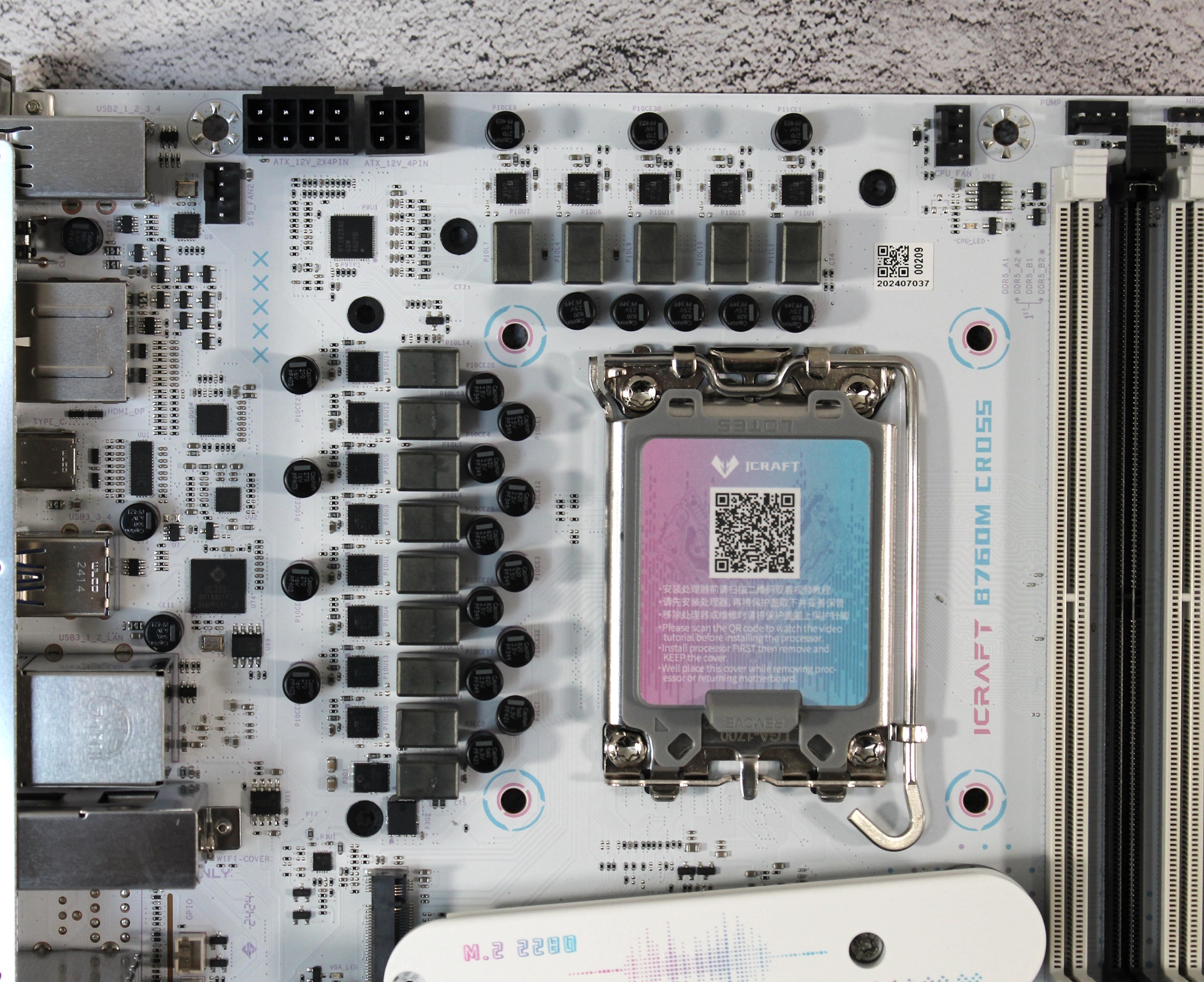
Power delivery on the B760M Cross is listed as 14 phases, with 12 dedicated to Vcore. Power travels from the EPS connector(s) on the rear to the Richtek RT3628AE controller chip and then to the 50A Vishay Sic654 MOSFETs supporting the CPU. The VRMs and heatsinks handled our flagship-class processor without complaints, easily keeping our VRMs running in spec.
It is worth noting that although the Maxsun website lists a 253W PL1 limit, our board never saw over 225W during our stress testing. It wasn’t temperature-limited, nor did Hwinfo display any throttling reasons. The BIOS does show PL1/2 of 253W/4096W, so why it’s happening, I’m not sure. But if you say it’s going to be able to output that much power, it should do it out of the box (not that our adjustments changed anything).
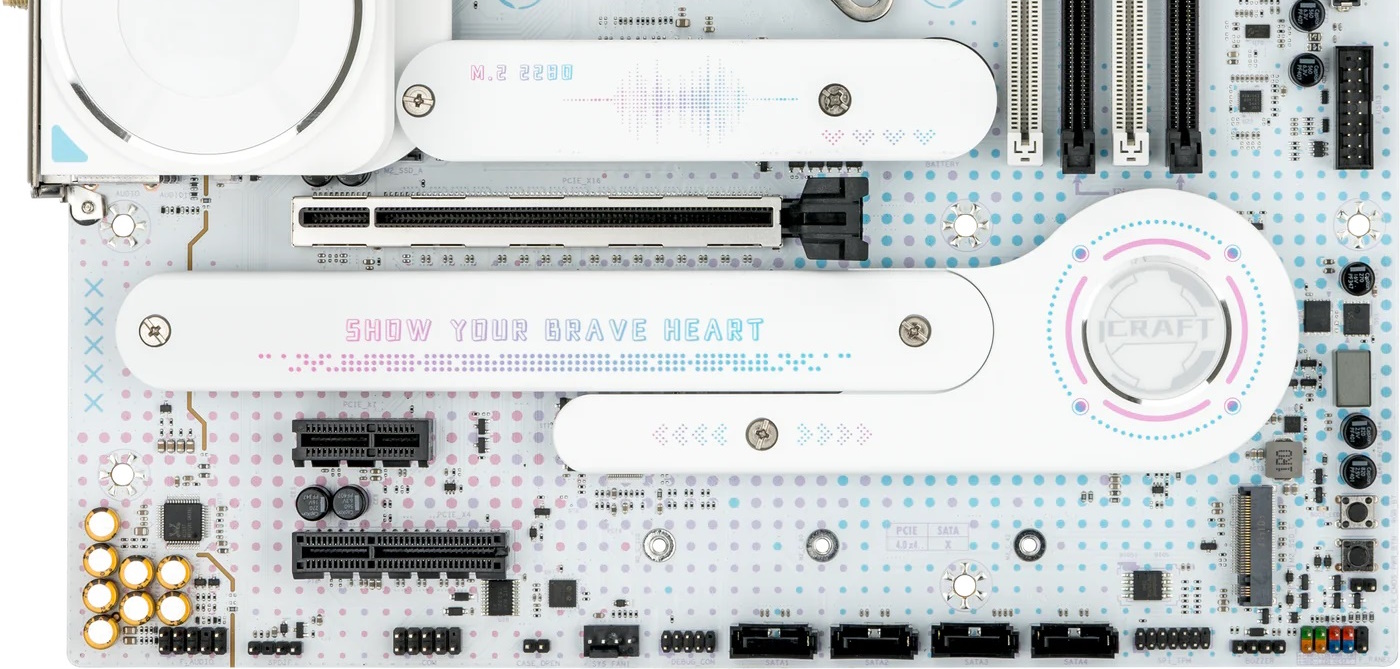
On the bottom half of the board, starting on the left, is a fully exposed audio section centered around a Realtek ALC897 audio codec. Surrounding that are several yellow capacitors dedicated to the audio, along with the separation line between the rest of the board and audio traces. The budget audio should be sufficient for most users.
Three PCIe slots sit in the middle of the board. The reinforced full-length slot connects through the CPU and runs up to PCIe 5.0 x16. The following two slots, a closed-ended PCIe 3.0 x1 slot and the open-ended PCIe 3.0 x4 slot, run through the chipset and are below the second M.2 socket/heatsink.
The B760M Cross has three M.2 sockets in total, two of which are hidden under heatsinks. All slots run up to PCIe 4.0 x4 (64 Gbps) speeds, with the top socket (M.2_1) supporting up to 80mm modules while the bottom two hold up to 110mm devices. Past the chipset heatsink, near the right edge, are two simple buttons. One is for power on/off, and the other is for RGB lighting.
Across the bottom are several headers and SATA ports. On the left is the front panel audio, a 2-pin CMOS jumper, a 4-pin fan header, and four vertically oriented SATA ports. For those looking to increase speed or add redundancy, the Cross supports RAID0/1/5/10 modes but only for the SATA ports. The company does not list RAID functionality for the M.2 storage.

As you find on most motherboards these days, the rear IO plate on the B760M Cross comes preinstalled. It sports a white background with grey writing and is generally easy to read. There are nine total USB ports: four USB 2.0, four USB 3.2 Gen1, and one 20 Gbps Type-C spread across the space, along with a clear CMOS button. HDMI and DisplayPort cover outputs if your CPU has integrated graphics and you aren’t going to install a GPU.
A Realtek 2.5GbE network port and Intel Wi-Fi 6E antenna connections cover networking, while audio consists of a 3-plug analog audio stack. If anything is missing here, it’s 10 Gbps USB-A ports; otherwise, you should be in good shape with what’s available.
MORE: Best Motherboards
MORE: How To Choose A Motherboard
MORE: All Motherboard Content

